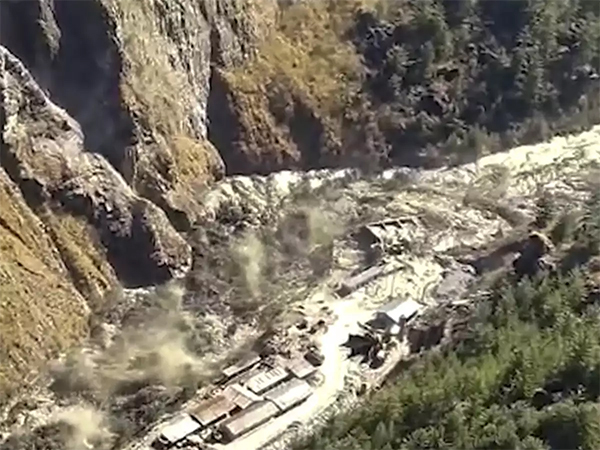Ø The flash flood on February 7, 2021 in Chamoli district, Uttarakhand that claimed at least 72 lives and caused at least 200 to be missing or dead was due to large mass of snow, ice and rock avalanche along with a hanging mass of rock crashing into the Raunthi Garh valley floor. This impact pulverised the combination of rock, snow and ice causing a rapid flow downstream of Raunthi Garh and into the Rishiganga valley leading to the deluge, the Geological Survey of India (GSI) said in a report released on June 29, 2021.
Ø The deluge had destroyed the 13.2 MW Rishiganga power plant and damaged the 520 MW Tapovan-Vishnugadh hydel power project, in whose tunnels several workers had been fatally trapped.

Ø The Geological Survey of India has suggested that “two days of hot weather preceding after two days of heavy snowfall could have been triggered this huge snow and rock avalanche/landslide causing sudden domino effect of flash flood in the downstream.”
Ø There was no evidence of a Glacial Lake Outburst Flood (GLOF) having caused the event, GSI noted. Due to the large volume of debris and the deluge, an artificial dam had formed near the confluence of Raunthi Garh and Rishiganga River, by the flowing debris which blocked the flow of Rishiganga River and formed a small lake temporarily.
Ø A study by National Remote Sensing Centre indicated that the time taken from the initiation of the avalanche and its disastrous impact up to Tapovan barrage site near Joshimath was “barely 50 minutes”, which indicates availability of a “very low lead time for raising any warning for the downstream areas.”
Ø Climate change, that was triggering higher temperatures in the upper reaches of the Himalaya had a role and the constant freezing and thawing of ice made parts of rocks weak making them vulnerable to collapse. “Areas having risks posed by smaller mountain glaciers were also becoming important sites where such hazards formed. The steep higher order streams and the narrow river valleys in the high-altitude areas of Himalayas remain extremely hazard prone, which are not only vulnerable to GLOF/Landslide Lake Outburst Flood (LLOF) hazards but have also become locale for a major disaster caused due to the domino effect of large/mega landslide and avalanche,” the GSI report noted.





